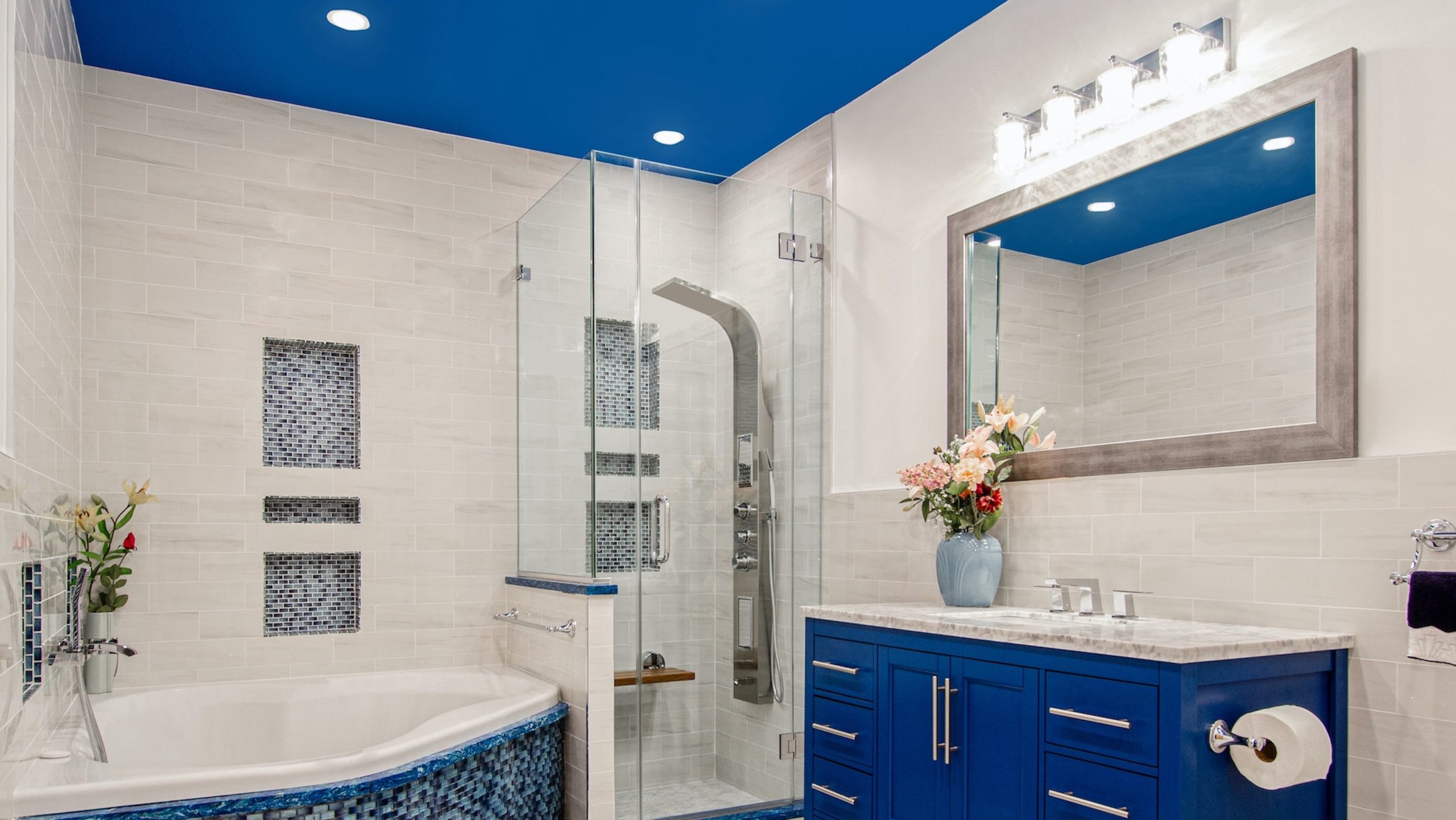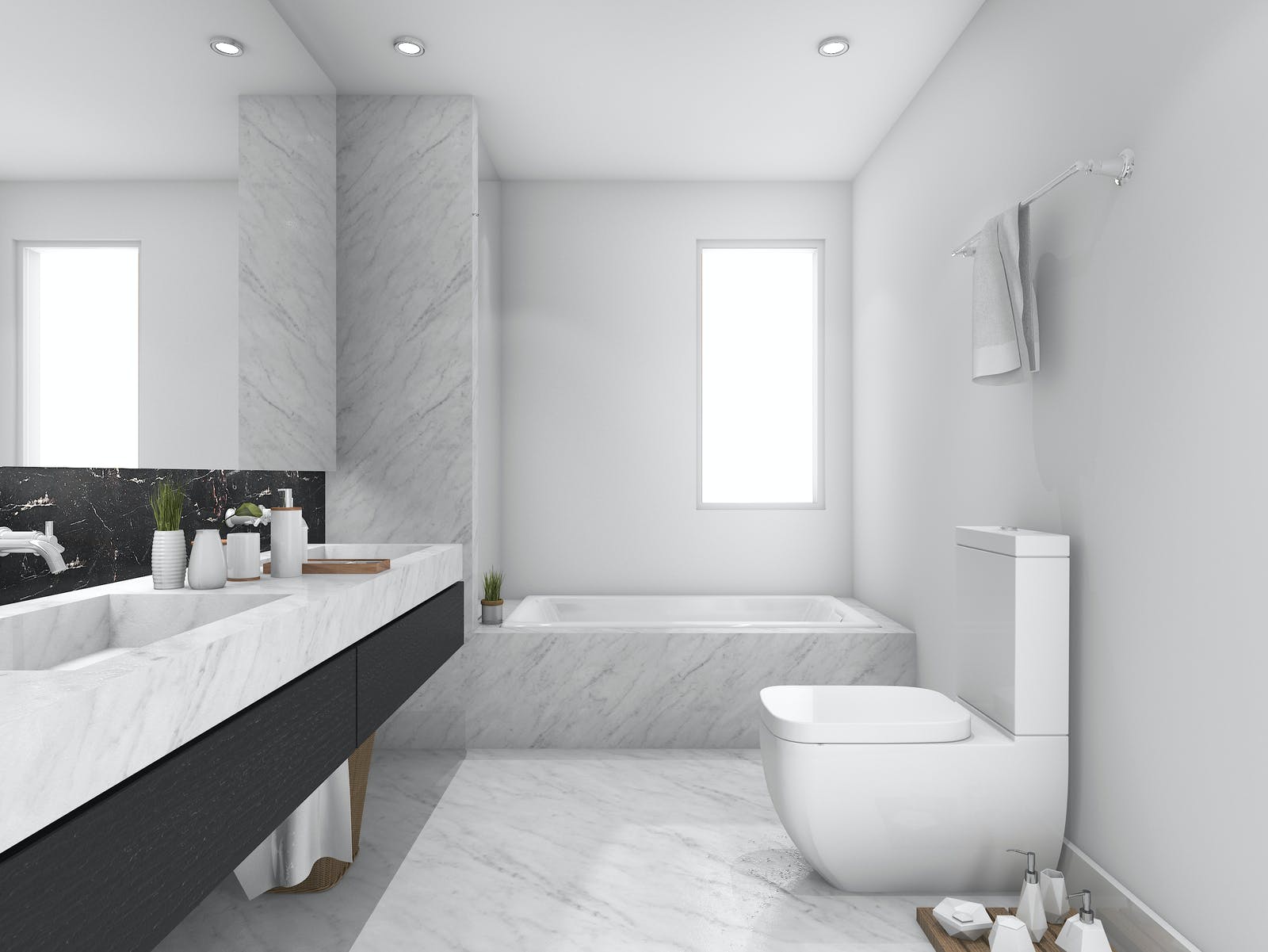Understanding Bathroom Ceiling Paint Needs: Which Paint For Bathroom Ceiling

The bathroom presents unique challenges for paint due to its high humidity, potential for mold growth, and frequent cleaning. Choosing the right paint for your bathroom ceiling is crucial for ensuring a durable, aesthetically pleasing, and healthy environment.
Factors to Consider When Choosing Bathroom Ceiling Paint
The selection of paint for a bathroom ceiling is guided by specific factors that ensure the paint’s performance and longevity in this demanding environment.
- Durability: Bathroom ceilings are prone to moisture and condensation, which can lead to peeling and cracking. Selecting a durable paint that can withstand these conditions is essential for a long-lasting finish.
- Moisture Resistance: The high humidity levels in bathrooms can cause paint to absorb moisture, leading to blistering, peeling, and mold growth. Moisture-resistant paints are formulated to repel water and prevent these issues.
- Mildew Resistance: Bathrooms are susceptible to mold and mildew growth due to the damp environment. Mildew-resistant paints contain additives that inhibit the growth of these microorganisms, preventing discoloration and unpleasant odors.
- Ease of Cleaning: Bathroom ceilings often accumulate dust, grime, and moisture, making them difficult to clean. Choosing a paint with a smooth, washable finish allows for easy cleaning and maintenance.
Popular Bathroom Ceiling Paint Types
Choosing the right paint for your bathroom ceiling is crucial for achieving a durable, moisture-resistant, and aesthetically pleasing finish. Understanding the properties of different paint types will help you make an informed decision.
Which paint for bathroom ceiling – This section delves into the most common paint types suitable for bathroom ceilings, outlining their advantages and disadvantages, and offering specific brand recommendations.
Latex Paint
Latex paint is a popular choice for bathroom ceilings due to its versatility, ease of application, and water-based formula. It dries quickly, emits low VOCs (volatile organic compounds), and is relatively easy to clean.
- Pros:
- Water-based, making it easy to clean up with soap and water.
- Dries quickly, minimizing the time required for the project.
- Low VOCs, making it a safer option for indoor use.
- Offers good adhesion to various surfaces, including drywall, plaster, and even previously painted surfaces.
- Available in a wide range of colors and finishes, including flat, satin, semi-gloss, and gloss.
- Cons:
- Less durable than oil-based paint, particularly in high-moisture environments.
- May not be as resistant to mildew and mold growth as some other paint types.
Examples of Recommended Latex Paint Brands:
- Sherwin-Williams Duration Home Interior Acrylic Latex Paint: Known for its durability, mildew resistance, and excellent coverage.
- Benjamin Moore Aura Interior Paint: Offers exceptional color richness, mildew resistance, and a smooth, durable finish.
- Valspar Reserve Interior Acrylic Latex Paint: Provides excellent coverage, durability, and mildew resistance at a more affordable price point.
Acrylic Paint
Acrylic paint, similar to latex paint, is water-based and offers excellent adhesion, durability, and moisture resistance. It’s often chosen for bathroom ceilings due to its ability to withstand high humidity and frequent cleaning.
- Pros:
- Water-based, making cleanup easy.
- Offers excellent adhesion to various surfaces.
- Highly durable, resisting scratches, stains, and fading.
- Provides good moisture resistance, making it ideal for bathroom environments.
- Available in a wide range of colors and finishes.
- Cons:
- May not be as mildew-resistant as some other paint types, especially in poorly ventilated bathrooms.
- Can be more expensive than latex paint.
Examples of Recommended Acrylic Paint Brands:
- Sherwin-Williams Emerald Interior Acrylic Latex Paint: Offers exceptional durability, mildew resistance, and a smooth, washable finish.
- Benjamin Moore Regal Select Interior Acrylic Latex Paint: Provides excellent coverage, durability, and mildew resistance at a reasonable price point.
- Valspar Signature Interior Acrylic Latex Paint: Known for its excellent coverage, durability, and mildew resistance at a more affordable price point.
Epoxy Paint
Epoxy paint is a two-part paint system that combines a resin and a hardener. This creates a highly durable, moisture-resistant, and chemically resistant coating suitable for bathroom ceilings.
- Pros:
- Highly durable, resisting scratches, stains, and chemicals.
- Offers excellent moisture resistance, making it ideal for high-humidity environments.
- Resistant to mildew and mold growth.
- Can be used on a variety of surfaces, including concrete, metal, and wood.
- Cons:
- Requires proper preparation and application, as the two-part system has a limited working time.
- Can be more expensive than other paint types.
- May have a strong odor during application and drying.
- Limited color options compared to latex and acrylic paints.
Examples of Recommended Epoxy Paint Brands:
- Rust-Oleum EpoxyShield Garage Floor Coating: A durable, moisture-resistant epoxy coating suitable for bathroom ceilings.
- KILZ Epoxy Primer & Sealer: A two-part epoxy primer and sealer that provides excellent moisture resistance and adhesion.
Oil-Based Paint
Oil-based paint, while less common for bathroom ceilings nowadays, offers exceptional durability and moisture resistance. It dries slowly but forms a tough, long-lasting finish.
- Pros:
- Highly durable, resisting scratches, stains, and moisture.
- Provides a smooth, glossy finish.
- Offers excellent mildew and mold resistance.
- Cons:
- Dries slowly, requiring longer drying times.
- Requires mineral spirits or paint thinner for cleanup, which can be messy and have a strong odor.
- High in VOCs, making it less environmentally friendly.
- May yellow over time, especially in areas exposed to sunlight.
Examples of Recommended Oil-Based Paint Brands:
- Benjamin Moore Advance Interior Acrylic-Alkyd Enamel: Offers exceptional durability, moisture resistance, and a smooth, washable finish.
- Sherwin-Williams ProClassic Interior Acrylic-Alkyd Enamel: Provides excellent coverage, durability, and mildew resistance at a reasonable price point.
Choosing the Right Finish for Your Bathroom Ceiling

The finish of your bathroom ceiling paint is a crucial decision, impacting both its aesthetic appeal and practicality. It determines how light reflects, how durable the paint is, and how easy it is to clean. Understanding the nuances of each finish helps you select the perfect option for your bathroom.
Impact of Paint Finish on Bathroom Ceiling
The choice of paint finish significantly influences the overall look and feel of your bathroom ceiling. Different finishes possess varying levels of sheen, reflecting light differently and creating distinct visual effects. For instance, a flat finish absorbs light, minimizing imperfections and creating a subtle, understated appearance. Conversely, a gloss finish reflects light, highlighting any flaws and creating a more polished, reflective surface.
Beyond aesthetics, paint finish affects the durability and cleanability of your bathroom ceiling. A higher sheen finish, such as semi-gloss or gloss, is more resistant to moisture and stains, making it ideal for high-traffic areas like bathrooms. These finishes are also easier to wipe clean, resisting the buildup of grime and mildew. However, a higher sheen finish can emphasize imperfections on the ceiling, so a careful assessment of your ceiling’s condition is necessary.
Types of Bathroom Ceiling Paint Finishes
- Flat Finish: This finish absorbs light, creating a matte, non-reflective surface. It’s excellent for hiding imperfections and creating a cozy, intimate atmosphere. However, flat finishes are more susceptible to stains and are difficult to clean, making them less suitable for high-moisture environments.
- Matte Finish: Matte finishes are slightly more durable than flat finishes and offer a subtle sheen. They provide a soft, elegant look while still concealing minor imperfections. Matte finishes are a good compromise between a flat finish’s low sheen and a satin finish’s durability.
- Eggshell Finish: Eggshell finishes offer a slight sheen, resembling the surface of an eggshell. They provide a soft, elegant look and are more durable than flat or matte finishes. Eggshell finishes are relatively easy to clean and resist stains, making them a popular choice for bathrooms.
- Satin Finish: Satin finishes have a noticeable sheen, providing a smooth, sophisticated look. They are more durable than eggshell finishes and offer excellent stain and moisture resistance. Satin finishes are easy to clean and are a good option for high-traffic bathrooms.
- Semi-Gloss Finish: Semi-gloss finishes have a high sheen, reflecting light and creating a polished, modern look. They are extremely durable, resistant to moisture and stains, and very easy to clean. Semi-gloss finishes are ideal for high-traffic bathrooms and areas prone to moisture.
- Gloss Finish: Gloss finishes have the highest sheen, reflecting light significantly. They offer exceptional durability, moisture resistance, and ease of cleaning. Gloss finishes are the most resistant to stains and are often used in high-traffic areas like kitchens and bathrooms. However, they can highlight imperfections on the ceiling, requiring a smooth, well-prepared surface.
Recommendations for Bathroom Ceiling Paint Finishes, Which paint for bathroom ceiling
- For a low-maintenance, low-sheen look: An eggshell finish is a good choice for most bathrooms. It offers a soft, elegant look and is relatively durable and easy to clean.
- For a more durable, stain-resistant finish: A satin or semi-gloss finish is recommended for high-traffic bathrooms or areas prone to moisture. They offer excellent stain and moisture resistance and are easy to clean.
- For a modern, high-sheen look: A semi-gloss or gloss finish is ideal for bathrooms with a contemporary design. They create a polished, reflective surface and offer exceptional durability and ease of cleaning.

